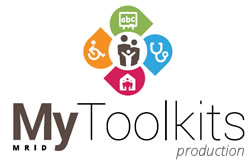Co-Design involves a shift in thinking and a new way of working, although not necessarily creation of completely new health and support systems that must be funded or resourced from scratch. That said, some consideration needs to be given to what funds and resources may be required for the development, implementation and maintenance of Co-Design processes, and how those resources might be secured.
 Health professionals and health services looking to introduce Co-Design into their practice should consider what support they need to be able to offer consumers and carers in order to enable their participation and engagement.
Health professionals and health services looking to introduce Co-Design into their practice should consider what support they need to be able to offer consumers and carers in order to enable their participation and engagement.
This may mean:
- Redefining the roles of existing staff members, both health professionals and support staff, to include the co-ordination and management of Co-Design processes;
- Providing training and development to staff and health professionals in the practice of Co-Design and the use of Co-Design tools;
- Employing new staff (such as a consumer or carer advocate) or drawing on existing services (such as case workers or translators) specifically to provide support and assistance for consumers and to represent their interests;
- Covering expenses and providing payment for consumers or carers who serve on boards or service development committees;
- Investing in new technologies, softwares and systems (such as videoconferencing systems, audio recording equipment, and licenses for online survey software) across which Co-Design tools can be deployed;
- Developing secure, reliable data and information management systems;
- Creating resources – such as fact sheets, brochures or websites – to explain the why and how of Co-Design to consumers, carers, their families and support networks.
State and federal governments are committed to ensuring that Co-Design becomes a defining feature of the way health services work with their client groups to improve service quality. To this end, resources may be available through a variety of different agencies within the health sector to fund whatever short and long-term projects or activities may be necessary to make this happen.
In many cases, the most important resource a health service can direct towards the development and implementation of Co-Design in their practice is time. It will take time and energy to rethink the way things are done, and to introduce tools and processes to establish working partnerships between health professionals and clients and consumers.
Health services also have an important role to play in supporting organised consumer groups by making resources available to them and enabling access to health sector funds in the form of special purpose grants. It is in their interest to do so, as an established and stable consumer support group can play an important role in facilitating Co-Design processes and making them work most smoothly and effectively.
For more about the ways health services can offer tangible support to consumer support groups go to Consumer Support Groups.
Consumer support groups themselves need to define independently what level of funds is required to support their activities. The priority needs of group members will determine which activities will be funded as a matter of priority. Specific activities may need to be funded in different ways. Fees may be charged to group members (though should always be kept to a minimum), grants from community organisations may be available, and some fundraising activity may be required. Some creative thinking – which carers and consumers are very good at after years of experience of problem solving in their day-to-day lives – can go a very long way.
For more about funding social events and activities go to Social Gatherings.
For more about funding seminars and conferences go to Seminars & Conferences.




